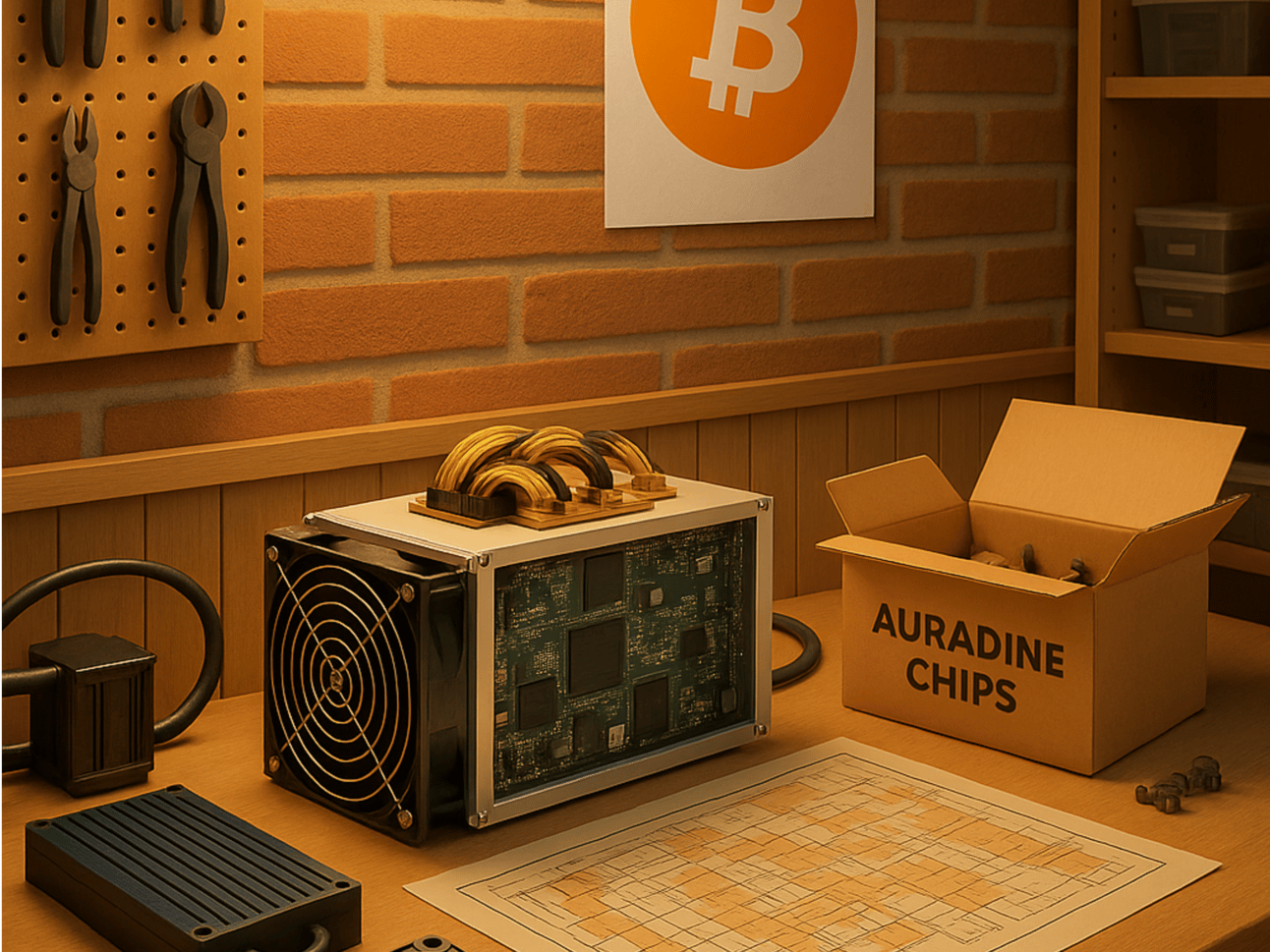- Heatpunks Weekly
- Posts
- The Heat Is Yours Now.
The Heat Is Yours Now.
Chip-level access just changed the game.This week we’re talking design freedom, thermal control, and what comes next when miners aren't boxed in.

🔥 Feature: The 5 Laws of Heat Reuse Mining
Hashrate heating is still very early, but it’s growing fast. People are building smarter, more creative systems every month. At this point, there’s no “standard build.” Every setup is a little different. But some core principles show up again and again.
Whether you’re heating a room, water tank, greenhouse, or something more experimental, these five laws tend to hold. They’re not rules as much as patterns. Good to know before you dive in too deep.
1. Every watt in = a watt of heat out
If your miner pulls 3,200W from the wall, it’s producing 3,200W of heat. That’s just physics.
You’re already paying for that energy. So whether you vent it out or route it into a useful space, that’s your call, but you have to do something with it. Heat reuse starts with that shift in mindset.
2. Heat moves slow. Air moves fast.
One of the first things you notice with any heat reuse setup: you don’t just need a heat source, you need a heat flow.
Air-cooled rigs need clear intake and exhaust. Poor airflow turns into hot zones, miner throttling, and noisy frustration. This is one of the trickiest parts of DIY hashrate heating, especially in real-world spaces like garages, sheds, or attics.
Heat and noise tend to go hand in hand. Between fans, ducts, pumps, and power supplies, it adds up.
That’s why so many builders lean toward water cooling or immersion. It’s not just about better thermal transfer, it’s about sound. Especially if your rig lives near your living space, solving for noise early will save you a lot of headaches later.
4. Insulation matters more than power
This one catches people off guard: your space might matter more than your miner.
A modest 3kW rig can keep a well-sealed space cozy, but that same rig in a drafty workshop might barely make a dent. Before you scale up hashrate, take a look at your walls, seals, and airflow paths. Audit your space.
5. ROI isn’t just about dollars
Yes, heating with hashrate can lower your electric bill or offset costs - but the real payoff is bigger.
You’re building systems that reduce waste, give you control over your environment, and open up new possibilities for self-reliance. That’s a different kind of return, and a big reason why more people are exploring this space.

🔗 Link of the Week: Auradine Opens the Door
This is one of the biggest shifts we've seen in mining hardware, and it has direct implications for the future of hashrate heat reuse.
Auradine just announced that they’re making their Bitcoin mining ASIC chips available for third-party integration. Not just pre-built miners. Not just closed-box containers. The actual chips.
That might not sound groundbreaking at first, but if you’ve spent any time trying to build a thermal system around miners, you know how locked down things have been. Bitmain and MicroBT control over 80% of the global market, and their chips are only sold inside fully assembled machines. No flexibility. No modularity. No customization.
For anyone building heat reuse systems, that’s been a massive blocker.
Auradine’s announcement changes that.
Direct access to chips means builders can:
Design their own form factors
Integrate chips into space- or heat-constrained environments
Pair high-efficiency silicon with purpose-built thermal systems
Build systems where the heat comes first, and the hashing gets integrated—not the other way around
This opens the door to an ecosystem of devices that aren’t just “mining rigs that get hot,” but true heat-first machines that mine.
There’s still work ahead - documentation, tooling, and supply all matter - but this is a big step toward a future where heating systems, appliances, and infrastructure can be designed around Bitcoin mining from day one.
This is what unlocks real innovation at the hardware level. Let’s build.
📅 Events & Drops: Bitcoin 2025 Hits Vegas
The biggest Bitcoin event in the world is heading to Las Vegas this year. Bitcoin 2025 lands at the Venetian from May 27–29, and while it’s not a niche mining or heat reuse event, it’s still one of the best places to connect, share ideas, and see where the larger ecosystem is heading.
The scale is hard to ignore - thousands of Bitcoiners under one roof, plus stages packed with speakers from across tech, finance, energy, and policy. The guest list ranges from Jack Mallers to Adam Back to Hester Peirce, Caitlin Long and recently freed Ross Ulbricht. It’s a bit of everything: infrastructure talks, regulation updates, cultural moments, and enough side events to keep your calendar full from dawn till whatever-you-call-it-in-Vegas hours.
For heatpunks and miners:
There won’t be a ton of deep thermal integration content, but there will be builders in the room. It’s a chance to network with hardware companies, find aligned investors, or just grab a beer with other heatpunks (me). If you’ve been head-down on your own setup for months, this is the kind of event that shakes loose new ideas.
More info here: b.tc/conference/2025
What Would You Do With À-La-Carte ASICs?
Auradine just gave us direct access to mining chips. If you could build a heater, appliance, or tool from scratch - what would it look like? What problem would you solve for yourself?
Hit reply with your idea and we might feature it in an upcoming issue.
Reply